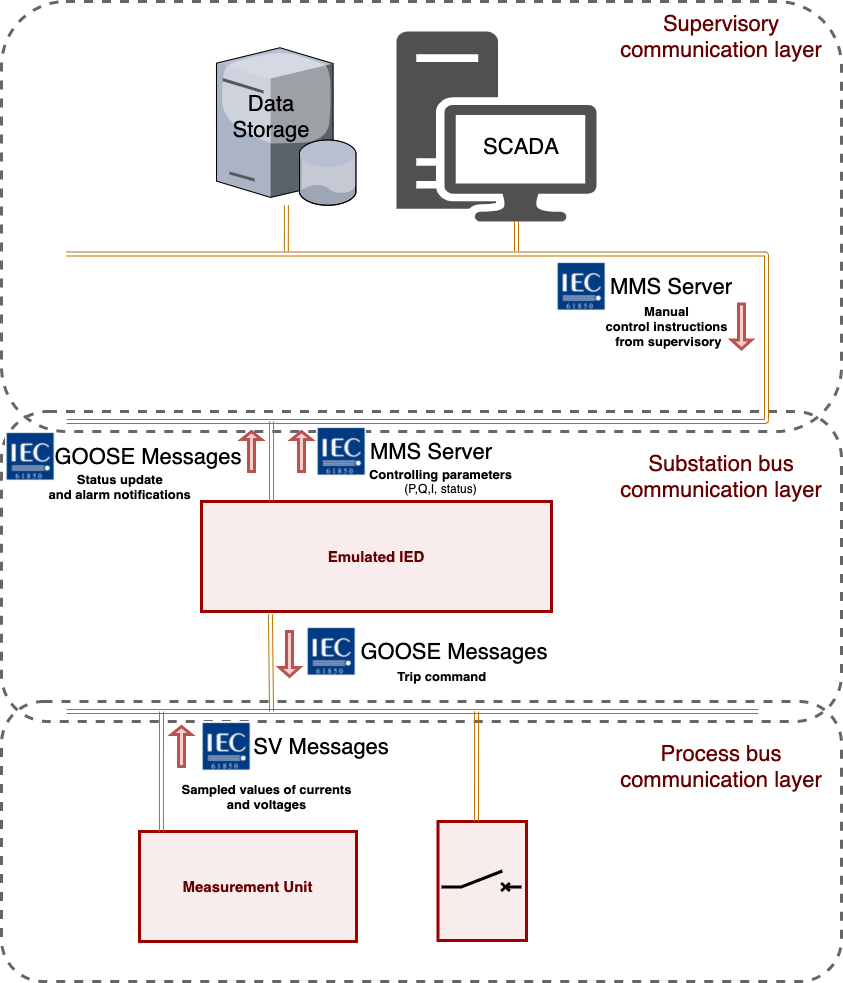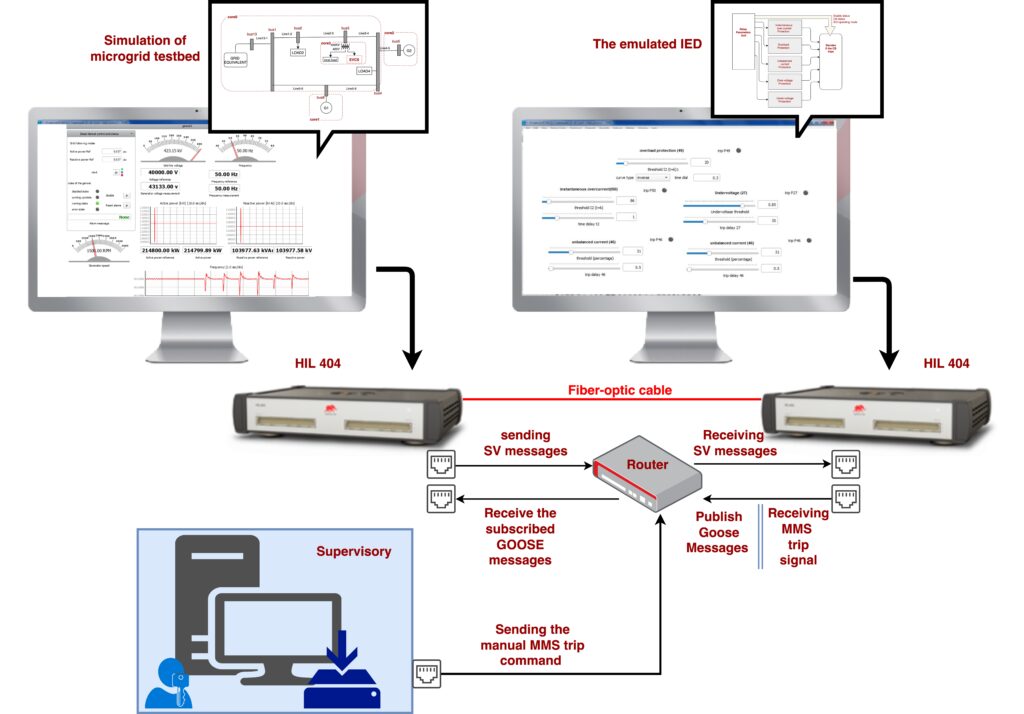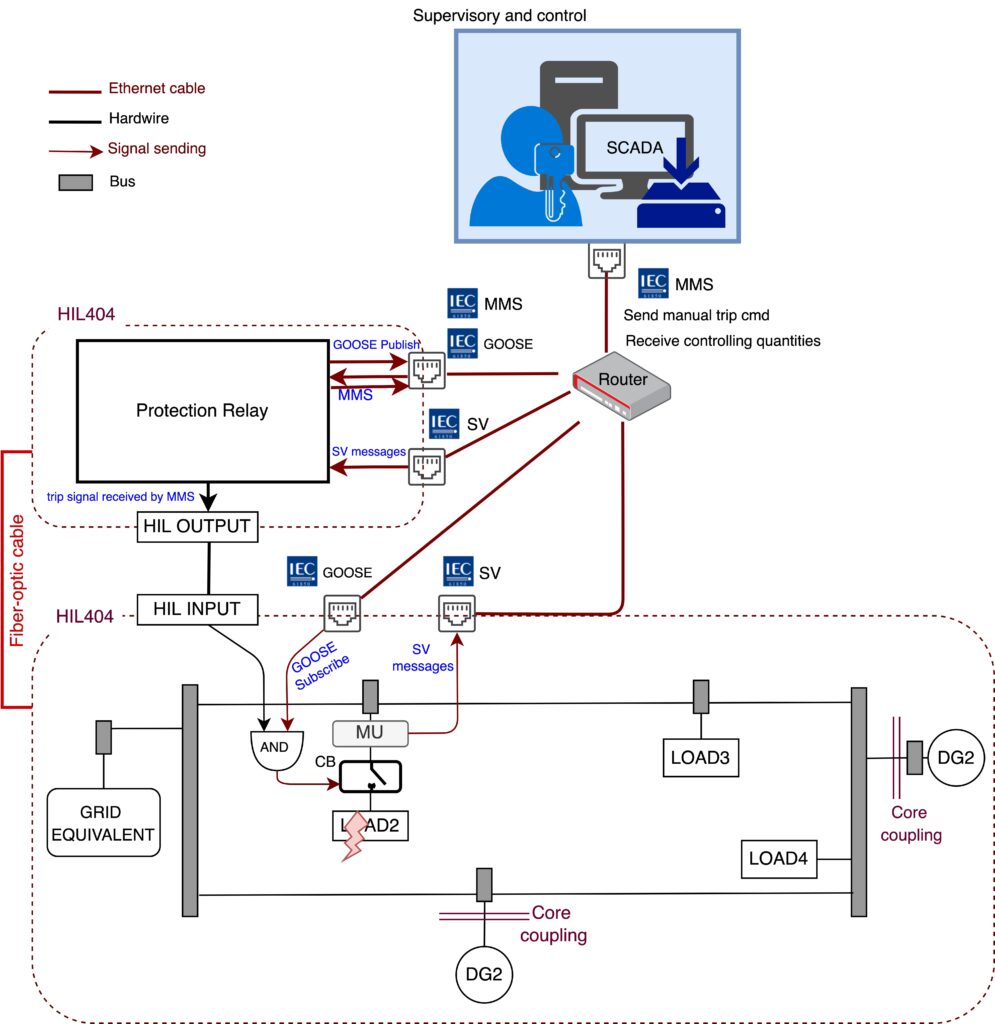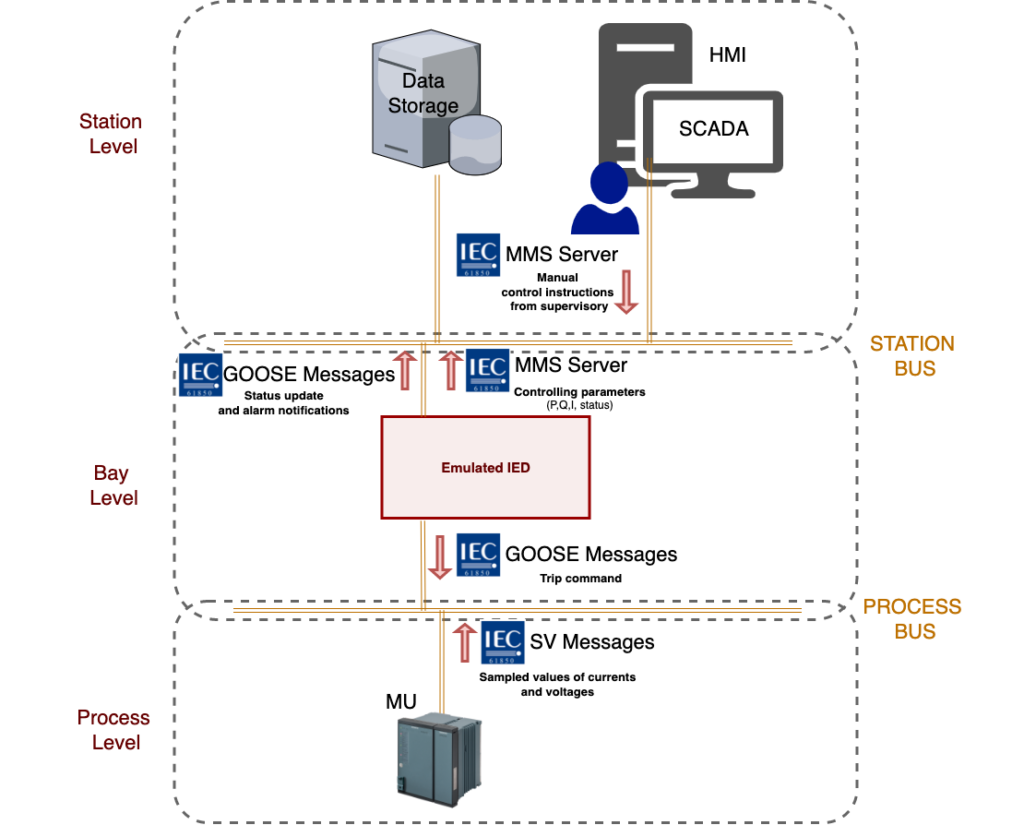Simulation of embedded communication layer in an emulated IED
This project studies the application of the communication protocols defined by the IEC61850 standard in Intelligent Electronic Devices (IEDs). Using IEDs to perform protection and control operations is one of the key points in achieving smart control of the different smart grid’s components. Since IEDs adopt IEC61850 as standard communication protocol, they guarantee interoperability between substation devices from different vendors.
Improving the cyber-physical power systems, consisting of different communication layers, new challenges are introduced and must be addressed. To study these challenges, the availability of test benches, such as digital twins of the grid, or smart components of the grid such as IEDs can be useful to forecast the behavior of the grid and validate algorithms and devices.
In this work, the Hardware-in-the-loop (HIL) methodology is adopted to simulate a microgrid in a real-time device providing a flexible base architecture for further studies and testing different scenarios. In these scenarios, the functionality and robustness of the protection mechanisms and communication protocols are confirmed by using an emulated IED running on a real-time device. This emulated IED is designed as a digital twin of a generic physical IED, meaning that the protection mechanisms are identical and the thresholds and time dials for each type of protection mechanisms (overcurrent, over voltage, overload, etc.) can be adjusted from the SCADA panel that resembles the IED user interface.
Alongside with the protection algorithms, IEC61850 is used in the emulated IED as the embedded communication protocol in three communication layers (Fig2). This testbed includes the supervisor, the substation, and the process communication layer creating a local network exchanging data at distinct levels.

The inclusion of the communication level the implementation of all three protocols of IEC61850 allowed the investigation of time delays, accuracy and cyber vulnerabilities of GOOSE, SV messages, and MMS protocols.
The outline of the created testbed is shown in Fig.1. As shown Two real time devices have been used, on one of them the microgrid testbed is running and on the other one the emulated IED is running both in real time and the time synchronization between two devices is done using the fiber optic cable between them.
The protection trip commands from The IED to the grid are sent using GOOSE messages and the monitoring parameters (currents and voltages) are sent to the IED using SV messages. Finally, the supervisory force commands in case of maintenance or the matters as such are sent to the IED using MMS server.


the same outline with internal components view
As the result of the project, the operation of the testbed using physical versus emulated IEDs is analyzed and compared, ensuring the robustness of this methodology and proved introducing no further delays in situations where the use of a physical IED would be unfeasible.

Publications:
